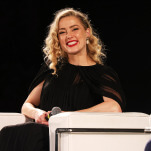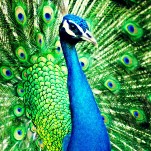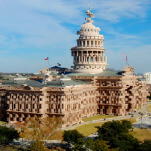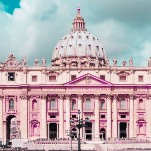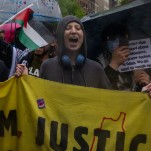Blue is the Warmest Color and the Lesbian Experience
LatestSince it won the Palme D’Or at Cannes this past May, Blue is the Warmest Color has been kicking up a dust cloud of controversy that has shifted recently from the film’s lengthy sex scene and NC-17 rating to allegations by the movie’s stars Léa Seydoux and Adèle Exarchopoulos that director Abdellatif Kechiche was “horrible” to work with and Kechiche’s retaliatory threat to sue Seydoux for defamation. The American media has covered the hubbub around the film with gusto, eagerly cramming the words “lesbian,” “sex,” and “NC-17” in headlines, while the film press has, by and large, lauded the film as a masterpiece. But as critic after critic waxes poetic about lesbian sex, it’s hard for me not to notice that the voice missing from the mass media conversation around the film is a queer one.
Recently New York Magazine published a round-up of every major review that addressed the film’s notorious sex scene. Only 3 out of 18 of those articles were written by women (Stephanie Zacharek for the Village Voice, Betsy Sharkey for the LA Times, and Ella Taylor for The Wrap). It is a massive oversight that, for the most part, men have generated the critical dialogue around this film (considering the dearth of female writers in film criticism — and in general — is another article all together). With the exception of an excellent Manohla Dargis piece that I will get to shortly, male critics have been the ones to point out Kechiche’s “male gaze” — and to comment on sex that they could never experience. Credit must be given to critics like A.O. Scott and Anthony Lane, among others, for at least pointing out the film’s voyeuristic feel, but the discussion cannot end with male critics’ opinions of a film about two gay women.
Manhohla Dargis eventually wrote a follow-up to her initial (less than glowing) review of the film, in which she takes issue with the way that, as she says, “patriarchal anxieties about sex, female appetite and maternity” frame Blue’s female bodies. I agree wholeheartedly with her assessment that there are moments in the film when Kechiche’s desire feels overbearing, and he does indeed spend many a frame focused on Adèle Exarchopoulos’s rear end. (Sure, he also points his camera at the butts of classical sculptures, but the mere interpolation of fine art derrieres does not artistic justification make.)
Dargis also spends several paragraphs discussing a blog post written by Julie Maroh, author of the graphic novel on which the film is based. Maroh is the only openly queer female voice we have heard from in the mainstream media so far, and a number of critics have used her as an authority on what lesbians must think of the film. While Maroh spends 80 percent of her post saying she likes the film, what has been quoted most frequently is her description of the sex as “a brutal and surgical display, exuberant and cold, of so-called lesbian sex.” Whether or not one agrees with that assessment, Maroh’s ultimate conclusion — “It appears to me that this was what was missing on the set: lesbians” — is definitely worth thinking about. At the very least, when Exarchopoulos says to an interviewer: “I’m not that familiar with lesbian sex” it makes you hope that there was more than one gay lady on set giving some instructions.
-

-

-

-

-

-

-

-

-

-

-

-

-

-

-

-

-

-

-

-

-

-

-

-

-

-

-

-

-

-

-

-

-

-

-

-

-

-

-

-





























